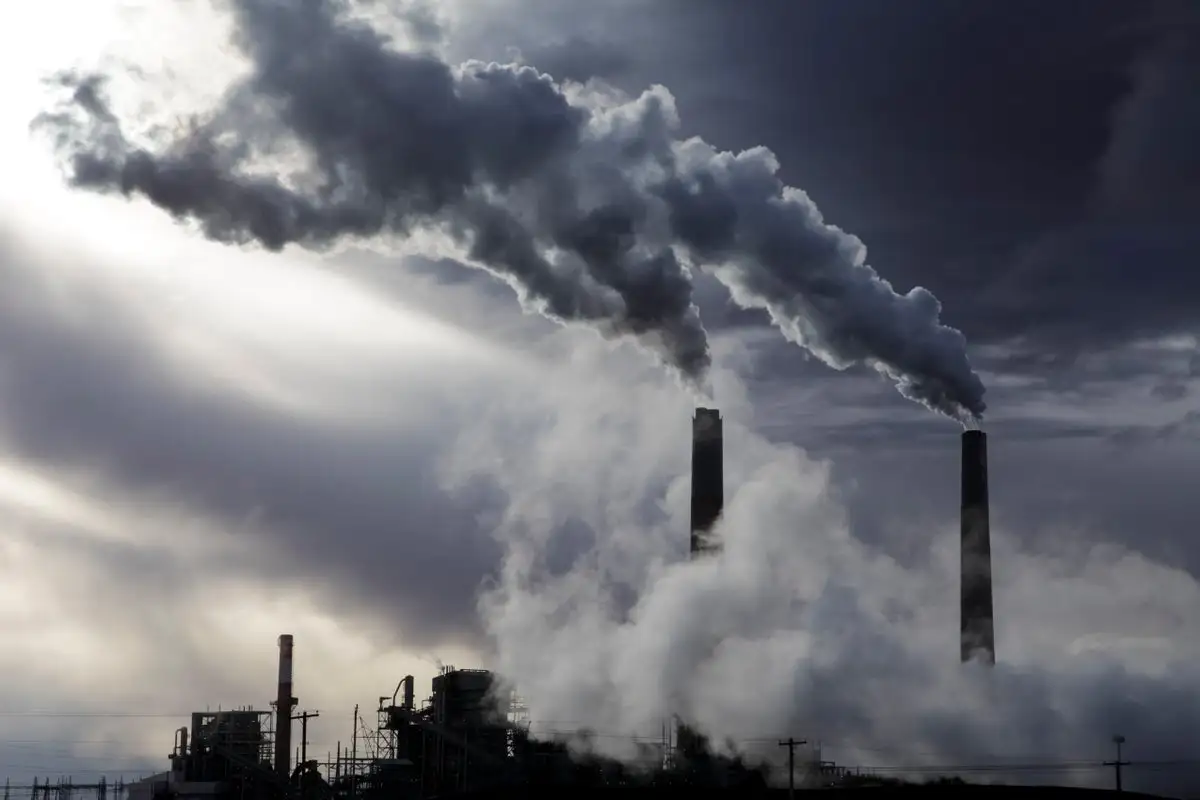The question to always ask with these articles is: Is this process prohibitively expensive, or does the process output more CO2 overall than you input? It’s always one of the two.
Another greenwashing method.
The slow boil will continue
These articles always avoid answering questions like that and are never detailed enough to inform you. I read this as, without the facts to support it, their process is similarly efficient to others, but yields a more stable end product. If the process scales, it will be more suitable for long term storage than previous attempts
Actually they miss the bigger truth. Unless we direct the bulk of the world’s resources by dismantling the current world order, this shit ain’t ever happening, and the climate is going to cripple the world order inevitably.
A bleak view, but I certainly can’t blame you for holding it.

por que no los dos?
hay más dinero en no hacer nada
So just carry on like normal people! We can keep kicking this can down the road indefinitely, allowing the O&G tycoons continue to rape the planet.
Fuck me.
Yeah, my first thought is we found a way to stave off catastrophe so the deniers can say they were right all along. 🤬
I get the temptation to feel that way, but this development should be seen as a really good thing.
1st we have started to electrify everything which is fantastic but it’s a Pandora’s box, no one can just put that technology back in the box and we’ll see continued development and improvement which reduces CO2 output.
2nd we needed a way to remove the extra CO2 from the atmosphere without overtaxing the environment, this should help us do that and get the planet back to a healthier position.
Making sodium formate (HCOONa), using electrochemistry :
CO2 + H2 =>> formic acid
H2O =>> H2 + 1/2O2
NaCl + H2O =>> NaOH + 1/2H2 + 1/2Cl2
formic acid + NaOH =>> sodium formateI guess they must use something similar to this, probably shortening some steps and using efficient solvent at the right temperature and pressure and with the right electrocatalist.
Well, I still prefer photosynthesis which produces sugar (and +). Plants are self replicating, use free solar energy, captues CO2 straight from the air and all this probably at a tiny fraction of the cost.
I prefer algae… much more space in the ocean…
My understanding is that pumping algae into the ocean is actually a really bad idea. In a barren pond or abandoned quarry? Sure, great place for it. However, iirc, if the algae blooms it’ll suck a lot of oxygen out of the water and I think puts CO2 back into the water (can’t remember if it just sucks up oxygen, or if it does both). That can cause marine life to suffocate and result in mass die-offs.
I never understood that- isn’t algae a plant therfore o2 producer?
It dies off and sucks oxygen, but its a balance
The problem is that if algae dies, it’s most likely die at the same time making a sudden and great O2 shortage making animals die, which creates the same process.
It’s more about the imbalance caused by algae blooms. They breed prolifically, and die off en masse more or less constantly as they bloom. When they die, they decompose and release carbon dioxide back into the water. So algae blooms hoover up carbon dioxide and concentrate it in a specific spot of ocean water, which can cause problems regarding anoxia and also ocean acidication.
The issue is that after a couple hundred years of intentionally eating literally everything in the ocean and dumping tons of our garbage and industrial waste there, oceanic ecosystems are even more fragile than usual and we don’t exactly have the ecological spare room to tinker with wild algae blooms on a scale large enough to make an impact on climate change. It would be trivial to ruin oceanic ecosystems, and by extension, many land-based ecosystems, with a megascale algae bloom.
Vats of algae in controlled environments might be a way to go, though?
Plants have a cycle, where sometimes they absorb more CO2 and sometimes they give off more. It’s not permanent storage.
With fossil fuels, we are taking CO2 that gas been sequestered for hundreds of millions of years, and injecting it either directly into the atmosphere, or into plant lifecycle where it is temporarily stored until it goes into the atmosphere. Plants help but are too temporary a solution
You are mostly right, but what I meant (sorry I was not explicit) was this :
https://en.m.wikipedia.org/wiki/BogHere’s the summary for the wikipedia article you mentioned in your comment:
A bog or bogland is a wetland that accumulates peat as a deposit of dead plant materials – often mosses, typically sphagnum moss. It is one of the four main types of wetlands. Other names for bogs include mire, mosses, quagmire, and muskeg; alkaline mires are called fens. A baygall is another type of bog found in the forest of the Gulf Coast states in the United States. They are often covered in heath or heather shrubs rooted in the sphagnum moss and peat. The gradual accumulation of decayed plant material in a bog functions as a carbon sink.Bogs occur where the water at the ground surface is acidic and low in nutrients. A bog usually is found at a freshwater soft spongy ground that is made up of decayed plant matter which is known as peat. They are generally found in cooler northern climates and are formed in poorly draining lake basins. In contrast to fens, they derive most of their water from precipitation rather than mineral-rich ground or surface water. Water flowing out of bogs has a characteristic brown colour, which comes from dissolved peat tannins. In general, the low fertility and cool climate result in relatively slow plant growth, but decay is even slower due to low oxygen levels in saturated bog soils. Hence, peat accumulates. Large areas of the landscape can be covered many meters deep in peat.Bogs have distinctive assemblages of animal, fungal, and plant species, and are of high importance for biodiversity, particularly in landscapes that are otherwise settled and farmed.
Yeah, woody perrenials lock up CO2 for centuries and we have a lot of abandoned mines and whatever holes are leftover from oil drilling that we could theoretically bury plant material in.
Still whatever we do would need to be on unprecedented scales and the World is just not going to do that. At least not until the effects are so acute that it is too late.
Yes, and this (“World is just not going to do that”) is very bad since things will get worse and many people may die (sooner than they would have) in the next 50, 100 years.
if you look at very long time scale, thousand years and more, things will balance up. (…?) But we don’t really know : there might be big volcanoes or completely new technologies like Geo engineering. Of course the future is (mostly) unknown.Yeah, the earth will be just fine. Humans and human civilization are what is at stake.
We will never run out of fizzy drinks now!
We need to find a way to produce more co2 faster just in case
I see “electrolysis” and understand “consumes a shit ton of electricity”
Here is the paper the article is based on
It is very chemistry dense that is way overy head. It says that “typical” electrolysis techniques have around a 10% “carbon efficiency”, whatever that means, while this one has around 96%.
I also see that in their test they used CO2 gas, so this may efficiently get us a usable fuel from CO2 but may not help us sequester CO2 gas from the atmosphere.
I’d love someone who knows what they are talking about to analyze it for us though.
Carbon Catch and Release
Net zero emissions are a step I guess, I would prefer carbon negative but the oil and gas cartels are gonna want to sell us something
The big problem with physical carbon storage is that we emit way too much to ever have enough land to store it all as powder. All of these technologies work great at the demonstration scale, but when you do the math for any sort of scale that would make a dent in our emissions, it’s just way too many carbon atoms.
Granulated as roadbase for roads and footpaths? Lightweight agregate additive in concrete? Bricks?
Any one have a better link?
Yeah, this article seems enamored with the idea that the researchers came up with the idea, but doesn’t actually explain how they are doing it at all.
The published study describing their math and method is linked in the article: https://www.sciencedirect.com/science/article/pii/S266638642300485X
Well, that’s all dandy with this new tech, but question is, is it economically feasible?
The opportunity, of course, is that it might become feasible to mine the air for carbon (and fold it with added electricity from transient sources like wind/wave/tide/solar) and compete with the folks pumping sequestered carbon fuels from the ground.
Of course, this wouldn’t compete with the use cases for petroleum that arise in refining the polymers in oil (think of all the plastics and other compounds that come out of the oil industry that aren’t refined fuels). Selling those products is so profitable that for years oil companies have been flaring off excess natural gas at the wellhead to be rid of it instead of spending the money to capture, contain, and ship it to market. On the one hand, if this tech to mine CO2 from the air becomes a competitor, 1 of 2 things happens:
-
- Refined fuels become cheap, so cheap that they’ll be flared off as waste instead of captured
-
- Petro-based polymers will become more expensive as their subsidy by the sale of refined fuels is undercut by competition
It’s probably #2, really refined fuels can be considered a waste product of extracting the petrochemicals
-
deleted by creator
Sure, okay…and then what?
They want to use it as fuel again
What do you mean? Iirc from the last time I saw this pop up, they wanted to use it as a fuel to heat homes, but it seems like they could just put it back in the ground where it belongs.
I keep waiting for them to discover plants.
Clean, thorium fueled nuclear reactors would be a much better solution for the next hundred or so years until fusion is practical.









